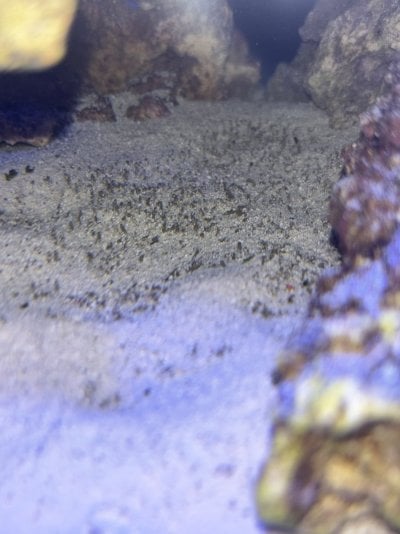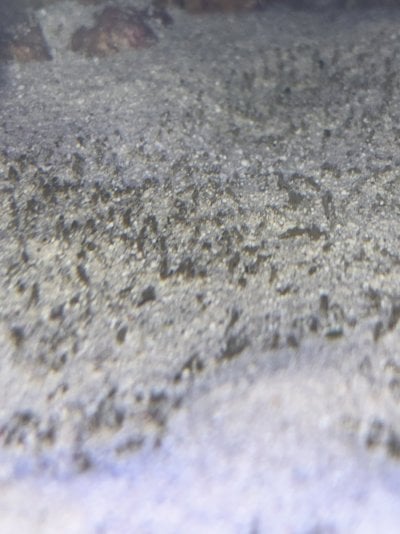Navigation
Install the app
How to install the app on iOS
Follow along with the video below to see how to install our site as a web app on your home screen.
Note: This feature may not be available in some browsers.
More options
You are using an out of date browser. It may not display this or other websites correctly.
You should upgrade or use an alternative browser.
You should upgrade or use an alternative browser.
Weird stuff on sand bed
- Thread starter Blitz06
- Start date
- Tagged users None
They are small worms. I have them too but don't know the name. @ISpeakForTheSeas might know
Possibly Chaetopterid worms:They are small worms. I have them too but don't know the name. @ISpeakForTheSeas might know
In this case, it's probably a Chaetopterid worm - they're very similar to Spionid worms, but they tend to prefer burrowing in the sand instead of in the rocks, and they reportedly tend to have longer palps.
That said, I say probably because to make a proper ID involves removing the worm from its tube and getting pics of the body out of the tube, which just isn't feasible.
Generally, these aren't a problem unless their numbers start getting out of hand.
Thank you, are there anything that eats those? And I’ll try and get a better pic later.Possibly Chaetopterid worms:
Thank you, are there anything that eats those? And I’ll try and get a better pic later.
I wonder if a sand sifting goby would eat them. It would at least bury them lol. In the tank I had that goby in, these would only form along the glass.
Thank you, are there anything that eats those? And I’ll try and get a better pic later.
I wonder if a sand sifting goby would eat them. It would at least bury them lol. In the tank I had that goby in, these would only form along the glass.
Nothing eats them IME.
Nothing eats them IME.
A siphon would eat them lol
There are predators, but the known fish predators are larger than most tanks should realistically ever house, and the inverts aren't as well studied, wouldn't be reef-safe, and/or wouldn't be available for purchase. I would also guess that - like with spionids - unless the predator can get their full body from inside their tube, the worms would probably just survive and regenerate.Thank you, are there anything that eats those? And I’ll try and get a better pic later.
So, removal via siphoning may be your best bet at this point.
I've found that a slotted spoon or "skimmer" as pictured below works better than siphoningSo, removal via siphoning may be your best bet at this point.
Or a cat litter scoop, lol
Haha, if it works it worksOr a cat litter scoop, lol
Similar threads
- Replies
- 1
- Views
- 140
- Replies
- 8
- Views
- 249
- Replies
- 16
- Views
- 332



















